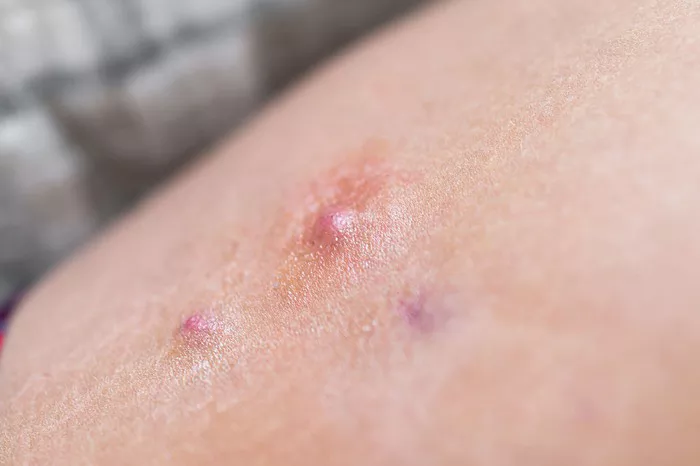Hidradenitis Suppurativa (HS) is a chronic skin condition characterized by painful, inflamed nodules, abscesses, and sinus tracts, primarily occurring in areas of the body where skin rubs together, such as the armpits, groin, buttocks, and under the breasts. Despite its relatively high prevalence, affecting approximately 1-4% of the population, HS remains poorly understood and often misdiagnosed. A key question in understanding HS is whether it is an autoimmune or autoinflammatory condition. This article will explore the characteristics of autoimmune and autoinflammatory diseases, delve into the pathogenesis of HS, and examine current evidence to elucidate whether HS fits the profile of an autoimmune or autoinflammatory disorder.
Understanding Autoimmune Diseases
Autoimmune diseases arise when the body’s immune system mistakenly targets its own tissues. Normally, the immune system distinguishes between self and non-self, attacking pathogens while sparing the body’s cells. In autoimmune diseases, this self-tolerance breaks down, leading to an immune response against the body’s own cells and tissues.
Key characteristics of autoimmune diseases include:
- Autoantibodies: The presence of antibodies that specifically target self-antigens.
- T-cell Activation: Involvement of T-cells, which play a crucial role in mediating the immune response against self-antigens.
- Chronic Inflammation: Persistent inflammation resulting from the ongoing immune attack on the body’s tissues.
Examples of autoimmune diseases include rheumatoid arthritis, systemic lupus erythematosus, and multiple sclerosis.
Understanding Autoinflammatory Diseases
Autoinflammatory diseases, in contrast, are characterized by unprovoked episodes of inflammation without the involvement of autoantibodies or T-cells. These conditions result from genetic mutations that affect the innate immune system, leading to dysregulated inflammatory responses.
Key characteristics of autoinflammatory diseases include:
- Genetic Mutations: Involvement of specific genetic mutations that affect components of the innate immune system.
- Inflammasome Activation: Dysregulation of inflammasomes, which are multiprotein complexes that play a key role in the inflammatory response.
- Recurrent Inflammation: Recurrent episodes of inflammation often without clear triggers.
Examples of autoinflammatory diseases include familial Mediterranean fever, TNF receptor-associated periodic syndrome (TRAPS), and cryopyrin-associated periodic syndromes (CAPS).
Pathogenesis of Hidradenitis Suppurativa
To determine whether HS is an autoimmune or autoinflammatory condition, it is essential to examine its pathogenesis, or the underlying mechanisms that cause the disease. HS is believed to result from a combination of genetic, immunological, and environmental factors.
Genetic Factors
Several genetic factors have been implicated in HS. Mutations in the gamma-secretase complex, particularly in the genes NCSTN, PSENEN, and PSEN1, have been identified in familial cases of HS. Gamma-secretase is involved in the Notch signaling pathway, which plays a crucial role in skin homeostasis and immune function. These mutations suggest a genetic predisposition to HS, aligning with the pattern seen in autoinflammatory diseases.
Immunological Factors
The immune system plays a significant role in the development of HS. The condition is characterized by a dysregulated immune response, with both innate and adaptive immune components involved.
- Innate Immune Response: Studies have shown elevated levels of pro-inflammatory cytokines, such as tumor necrosis factor-alpha (TNF-α), interleukin-1 (IL-1), and interleukin-17 (IL-17), in HS lesions. These cytokines are associated with the innate immune response and are key players in autoinflammatory diseases.
- Adaptive Immune Response: There is also evidence of adaptive immune system involvement in HS. T-cells and B-cells infiltrate HS lesions, and some studies have reported the presence of autoantibodies, although their role in HS pathogenesis is not well established.
Environmental Factors
Environmental factors, such as smoking, obesity, and mechanical friction, have been identified as risk factors for HS. These factors can exacerbate inflammation and contribute to the development and progression of the disease.
SEE ALSO: How Long Do HS Flare-Ups Last?
Evidence for Autoinflammatory Nature of HS
The genetic mutations and elevated levels of pro-inflammatory cytokines in HS point toward an autoinflammatory nature. The involvement of the innate immune system, particularly the dysregulation of cytokines like TNF-α, IL-1, and IL-17, is a hallmark of autoinflammatory diseases. Moreover, the recurrent, unprovoked inflammation seen in HS is consistent with the pattern observed in autoinflammatory conditions.
Studies have shown that therapies targeting the innate immune response, such as TNF inhibitors (e.g., adalimumab) and IL-1 inhibitors (e.g., anakinra), can be effective in treating HS. The success of these therapies further supports the autoinflammatory nature of the disease.
Evidence for Autoimmune Nature of HS
Despite the strong evidence for an autoinflammatory nature, there are also elements of HS that suggest an autoimmune component. The presence of T-cells and B-cells in HS lesions indicates that the adaptive immune system is also involved. Some studies have reported the presence of autoantibodies in HS patients, although their significance remains unclear.
The chronic nature of HS and the persistent inflammation resemble autoimmune diseases. Additionally, therapies that target the adaptive immune system, such as methotrexate and systemic corticosteroids, have shown some efficacy in treating HS, indicating that both innate and adaptive immune responses may be involved in its pathogenesis.
Conclusion
The current evidence suggests that HS has characteristics of both autoimmune and autoinflammatory diseases. The genetic mutations and elevated levels of pro-inflammatory cytokines point toward an autoinflammatory nature, while the involvement of T-cells, B-cells, and the presence of autoantibodies suggest an autoimmune component.
HS is likely a complex disease with a multifactorial pathogenesis, involving both innate and adaptive immune responses. It may be more accurate to classify HS as a disease with mixed features of autoinflammatory and autoimmune conditions. This classification can help guide the development of targeted therapies that address both aspects of the disease, ultimately improving patient outcomes.
Future Directions
Further research is needed to fully elucidate the pathogenesis of HS and clarify the relative contributions of autoinflammatory and autoimmune mechanisms. Understanding the precise mechanisms underlying HS will be crucial for developing more effective treatments and potentially finding a cure for this debilitating condition.
Advances in genomics, immunology, and personalized medicine hold promise for improving our understanding of HS and identifying novel therapeutic targets. Collaboration between researchers, clinicians, and patients will be essential in driving progress and improving the quality of life for individuals living with HS.
Related Topics:


























